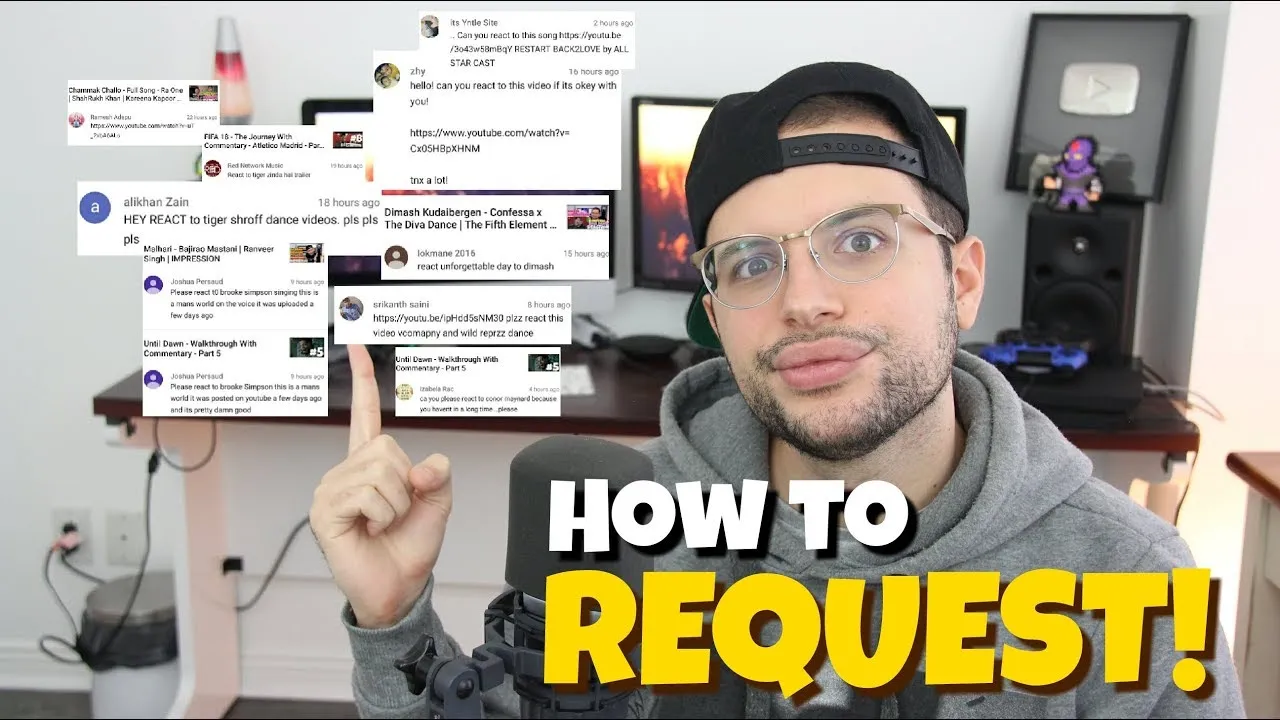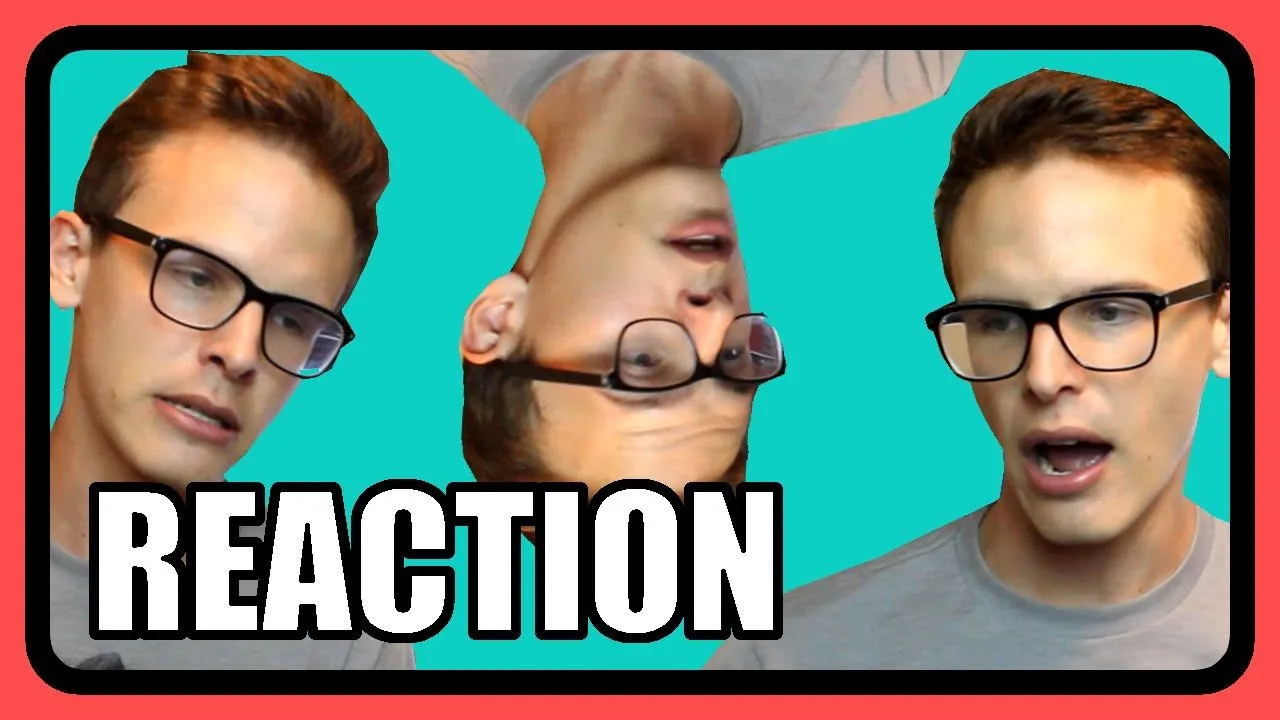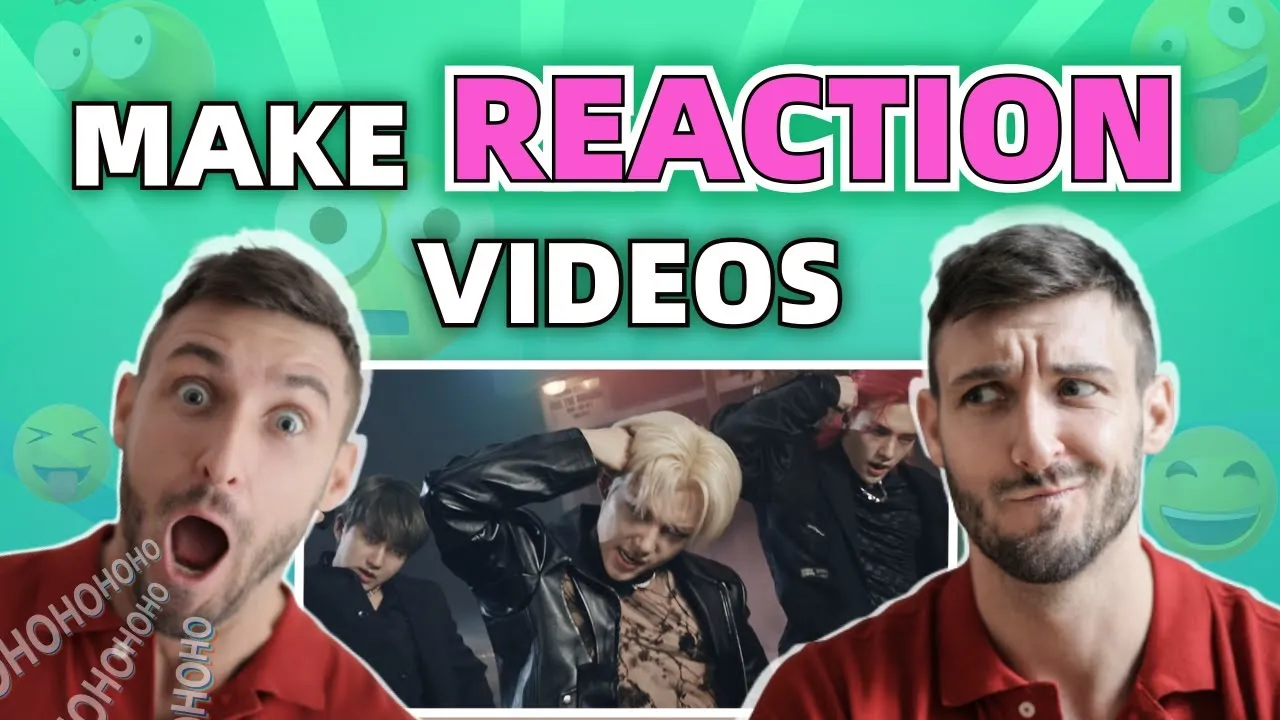Reaction videos have become a fascinating phenomenon in the world of online content creation. Essentially, these videos capture individuals or groups watching and responding to various forms of media – be it music videos, movie trailers, or viral clips. The charm lies in the authenticity of the reactions, which can range from laughter to shock, providing viewers with a relatable experience. But what makes these videos particularly interesting is the intersection of creativity, entertainment, and legality. As they continue to grow in popularity, understanding the implications surrounding them is crucial for both creators and viewers alike.
The Rise of Reaction Videos on YouTube

Over the past few years, reaction videos have transformed from a niche content type into a mainstream staple on YouTube. So, what fueled this remarkable rise?
- Accessibility of Content: With the vast array of media available online, many creators find themselves drawn to popular or trending videos. This accessibility allows for a diverse range of reactions and experiences.
- Engagement Factor: Viewers enjoy the shared experience of watching someone react. The emotions displayed can amplify their own feelings toward the content, creating a sense of connection.
- Community Building: Reaction channels often foster communities around shared interests, allowing fans to discuss their favorite content collectively, which further drives views and subscriptions.
- Entertainment Value: The unpredictable nature of reactions adds an element of surprise and humor. Watching someone jump in shock or laugh uncontrollably can be incredibly entertaining.
Moreover, famous reaction channels like "React" and "Jaby Koay" have paved the way, showcasing how these videos can garner millions of views and create dedicated fan bases. This rise reflects a broader trend toward informal, relatable content, challenging traditional media formats.
| Channel Name | Subscribers | Focus Area |
|---|---|---|
| React | 20M+ | General reactions to various media |
| Jaby Koay | 6M+ | Movie and TV show reactions |
| Fine Bros Entertainment | 15M+ | Kids, teens, and adult reactions |
In summary, the rise of reaction videos on YouTube isn't just a trend; it's a cultural shift that emphasizes community, entertainment, and the power of genuine human emotion in the digital space.
Also Read This: Mastering MHA Ultra Rumble: A Guide to Playing Your Favorite Heroes
Copyright Basics: What You Need to Know

When it comes to creating content on YouTube, understanding copyright is crucial. Copyright is a legal protection for original works, including videos, music, and images. If you're thinking about making reaction videos, it's important to know what you can and cannot use without permission.
Here are some key points to keep in mind:
- Original Works: Copyright protects the expression of ideas, not the ideas themselves. This means that while you can discuss or critique a concept, you can't use someone else's creative expression without permission.
- Ownership: The creator of the original content holds the copyright unless they explicitly transfer it or create it under a work-for-hire agreement.
- Duration: Copyright typically lasts for the life of the creator plus 70 years, but this can vary based on the nature of the work.
So, if you're reacting to a video, you might think you can just include clips from it. However, doing so could lead to copyright infringement if you don't follow certain guidelines. Always consider the source of your content and whether you have the right to use it.
Also Read This: How to Download Dailymotion Video with aTube Catcher
Fair Use Explained

Fair use is a legal doctrine that allows limited use of copyrighted material without permission from the rights holders. It’s particularly important for reaction videos, as many creators rely on this principle to include clips from original works while providing commentary.
However, fair use isn’t a free pass. Here are the factors that determine whether your use qualifies as fair use:
| Factor | Description |
|---|---|
| Purpose and Character: | Is your use transformative? Are you adding new meaning or context? Commercial use is less likely to be fair use. |
| Nature of the Copyrighted Work: | Using factual works is more likely to be fair use than creative works, like movies or music. |
| Amount Used: | Using a small portion of a work is more favorable for fair use, but even a short clip can infringe if it’s significant. |
| Effect on the Market: | If your use negatively impacts the market for the original work, it’s less likely to be considered fair use. |
In summary, while fair use provides some leeway, it’s essential to approach it cautiously. Always weigh these factors when creating reaction videos to navigate potential legal pitfalls!
Also Read This: How to Curl Hair at Home Without Rollers
How Fair Use Applies to Reaction Videos
When it comes to reaction videos on YouTube, the concept of fair use is often at the center of legal discussions. So, what exactly is fair use? It’s a legal doctrine that allows limited use of copyrighted material without needing permission from the copyright owner. For reaction videos, this can be quite a gray area. Let's break it down!
Here are some key factors that determine whether a reaction video qualifies as fair use:
- Purpose and Character: If the reaction video is transformative, meaning it adds new expression or meaning, it leans towards fair use. For instance, a video that critiques a movie while showing snippets can be seen as transformative.
- Nature of the Copyrighted Work: Using creative works, like films or music, is less likely to be considered fair use compared to factual works. So, reacting to a documentary may have a stronger fair use claim than reacting to a blockbuster movie.
- Amount Used: Using small clips from the original content is generally safer. If a reaction video shows only brief excerpts, it’s more likely to be considered fair use.
- Effect on the Market: If the reaction video doesn’t impact the market value of the original work, it strengthens the fair use argument. For example, if viewers aren’t likely to watch the original content after viewing the reaction, it’s a good sign.
In summary, while fair use can protect many reaction videos, creators should tread carefully and understand the nuances involved. Each case is unique, so weighing these factors is crucial!
Also Read This: Proven Strategies to Increase Sales on Alamy
Common Legal Issues Surrounding Reaction Videos
Despite the potential for fair use protection, reaction videos aren’t free from legal troubles. Here are some common legal issues that creators often face:
| Issue | Description |
|---|---|
| Copyright Infringement Claims | Many copyright holders aggressively protect their content. If they feel a reaction video uses too much of their work, they might issue takedown notices. |
| Monetization Restrictions | Even if a reaction video qualifies as fair use, platforms like YouTube may limit monetization options, especially if the original content is heavily featured. |
| Content ID Matches | YouTube’s Content ID system can automatically flag videos that use copyrighted material, leading to potential disputes even when fair use applies. |
| Defamation Risks | If a reaction video critiques or portrays the original content in a misleading way, it could lead to defamation claims against the creator. |
In light of these issues, it’s essential for creators to stay informed about copyright laws and how they apply to their work. Consulting with legal experts before posting can be a wise move to navigate the complexities of this exciting yet challenging landscape.
Also Read This: Enhancing Your YouTube Experience with Format Changes
7. Case Studies: Notable Legal Battles
Understanding the legality of reaction videos isn't just about the legal framework—it's also about real-world examples that highlight the challenges creators face. Let's dive into some notable legal battles that have set precedents in this space.
1. The “Dancing Baby” Case: This 2007 case was pivotal for fair use discussions. When a mother posted a video of her baby dancing to a popular song, the copyright owner tried to pull it down. However, the court ruled in favor of fair use, emphasizing the transformative nature of the video.
2. Matt Hoss vs. Warner Bros.: This case from 2019 involved a YouTuber who reacted to a film trailer. Warner Bros. claimed copyright infringement. The court ultimately sided with Hoss, acknowledging that his commentary added value and context to the original material.
3. FaZe Clan vs. 20th Century Fox: In this instance, FaZe Clan, a popular esports organization, faced backlash after posting reaction videos to the show “The Simpsons.” Fox claimed that the videos misrepresented their content, leading to a lawsuit that raised questions about fair use and parody.
These cases illustrate the fine balance between creative expression and copyright law. They remind creators to be vigilant about the content they use, as the outcome of a legal battle can hinge on how transformative their content is.
Also Read This: Mastering Getty Images Filters to Find the Perfect Photos for Your Project
8. Best Practices for Creating Reaction Videos
If you're eager to jump into the world of reaction videos, there are some best practices you should follow to navigate the legal landscape while enhancing your content's appeal. Here’s what you need to know:
- Use Clips Sparingly: Limit the amount of the original video you use. A good rule of thumb is to keep it under 10-15% of the total length.
- Add Value Through Commentary: Always provide insightful commentary or criticism. This transforms your video into an educational experience rather than a simple repost.
- Credit Original Creators: Give credit where it’s due. Mention the original creator and provide a clear link to their content in your video description.
- Be Mindful of Content Type: Avoid using videos from creators who explicitly prohibit reaction content. Always check their policies.
- Stay Informed About Fair Use: Familiarize yourself with fair use guidelines and be aware that laws can vary by location.
By following these best practices, you'll not only safeguard your channel from potential legal issues but also enrich your audience’s viewing experience. Remember, authenticity and respect for original creators go a long way in building a successful reaction video platform!
Understanding the Legality of Reaction Videos on YouTube
Reaction videos have surged in popularity on platforms like YouTube, where creators share their real-time responses to various forms of media, including movies, music videos, and other YouTube content. However, the legality of these videos often raises questions surrounding copyright issues and fair use. This article aims to clarify these complexities.
At the heart of the legality of reaction videos lies the concept of copyright. Copyright laws protect creators from unauthorized use of their work, which includes audio, video, and images. Here are some key points to consider:
- Original Content: Reaction videos must include original commentary or transformative content to qualify as fair use.
- Fair Use Doctrine: This legal principle allows limited use of copyrighted material without permission, provided it meets certain criteria.
- Amount Used: Using a small portion of the original content increases the likelihood of fair use; however, there is no strict rule on how much is permissible.
- Purpose and Character: If the reaction video adds new meaning or context, it may be more likely to qualify as fair use.
In addition, the monetization of reaction videos poses its own set of challenges. Creators must be cautious, as monetizing content that includes copyrighted material may lead to copyright strikes or claimed revenue by the original content creators.
| Legal Aspect | Details |
|---|---|
| Copyright | Protects original works; requires permission for use. |
| Fair Use | Allows limited use under specific conditions. |
| Monetization | Risk of copyright claims; requires careful consideration. |
In conclusion, while reaction videos can be a fun and engaging way to interact with content, creators must navigate the intricacies of copyright law and fair use to avoid legal repercussions. Being informed and cautious will help ensure a smoother experience in the vibrant world of YouTube.